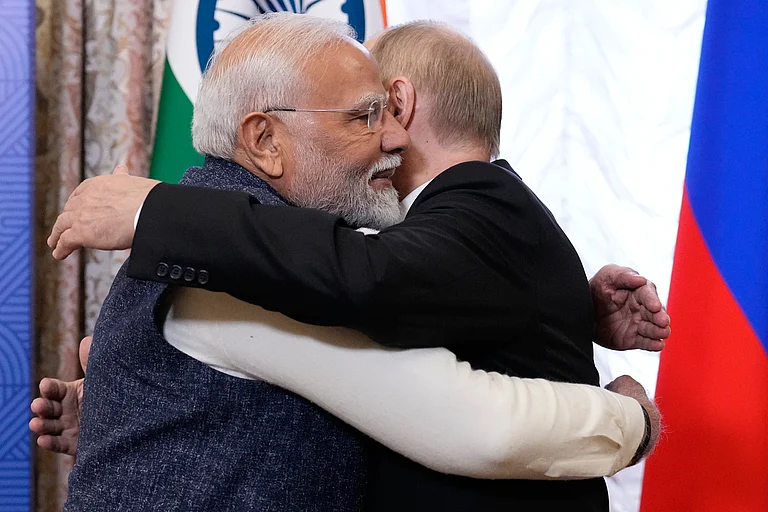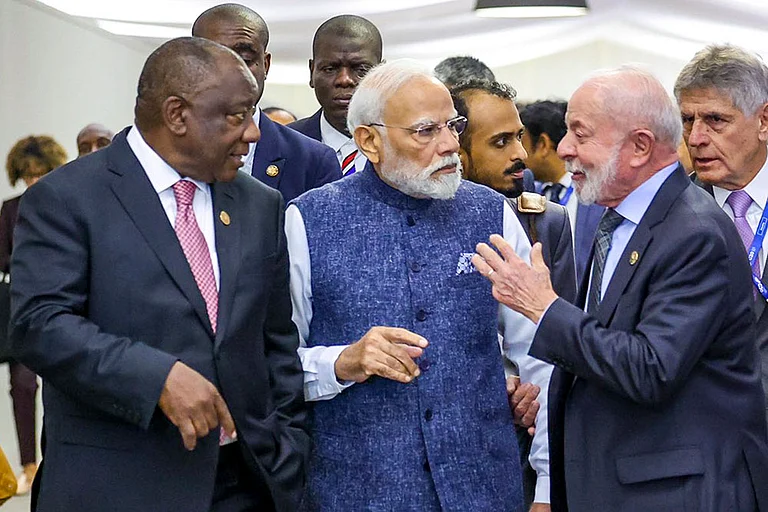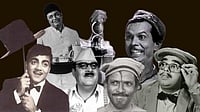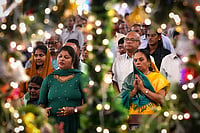
Prime Minister Modi’s waving of a gamcha in Bihar last week sparking an interest in it.
The gamcha is a multipurpose chequered fabric synonymous with India’s working class.
There are around 400 variants of gamcha across India; it has always been a symbol of cultural identity.
Prime Minister Narendra Modi waved a gamcha at the crowd in Bihar last week, soon after the inauguration of the Aunta-Simaria bridge. This is not the first time he has done a gamcha wave, and going by the crowd response, it won’t be his last.
Modi started to dabble in this accessory during the onset of the COVID 19 pandemic in 2020, when he addressed the nation wearing a Manipuri gamcha (leirum phee) as a mask, stressing on the importance of ‘home-made’ masks. This traditional hand-woven stole is a leitmotif of the Meitei tribe, among others in Manipur. There was an overnight increase in demand for these red-and-white gamchas, fuelling machine-made copies in Uttar Pradesh, and sparking controversy with protests against the misappropriation of Manipuri culture.
Handkerchief, towel, scarf, sun-block, shawl, tablemat, puja cloth, headgear or sheet, the gamcha is a multipurpose chequered fabric synonymous with India’s working class. During COVID-19, when migrant labourers were returning to their villages, walking for days across the length and breadth of India, everyone noticed them wearing their gamchas. Suddenly, gamchas were in the spotlight, and everyone was wearing them—from Shah Rukh Khan to Antonio Banderas.
Now a muse for designers and fashionistas who have been drawn to the rustic charm and eco-friendly credentials of the breathable gamcha, this humble, practical piece of unstitched cloth is making waves on the catwalks of fashion capitals worldwide as stylish scarves and shawls, trendy tops, bustiers and wraps.
With its rich cultural history and around 400 variants across India, the gamcha has always been a symbol of cultural identity, particularly noticeable in the warm and humid regions of West Bengal, Bihar, Odisha, Andhra Pradesh, Telangana, Karnataka, Tamil Nadu, and Kerala where it is used to wipe sweat or worn on the head for protection from the heat.
In Tamil Nadu, the fabric goes by the name ‘thundu’ and is available in shades of red, orange, grey and mustard, with smaller checks. Odisha’s gamocha/gamosa has touches of ikat. In Kerala, a white thorthu and in Punjab, a parna assumes the role of the gamcha. In Karnataka, it is known as haigal meli, and if someone other than a labourer wears it, they are teased and asked not to pretend to be hard workers. Class is the invisible language that the gamcha is not speaking. It is a marker of identity and resilience; it has to be earned.
But the socio-political linkages of the gamcha and the crossing of class boundaries in a manner of mocking the poor have to garner as much spotlight as the universality of the humble gamcha as a fashion accessory. Over the years, political groups have increasingly adopted it for rallies and campaigns, integrating it with party colours and logos. And it looks like with each passing year, they are getting away with more. If clothing is identity, it is also a symbol of fake solidarity or protest, depending on how you use it.
The leitmotif nature of the gamcha is reminiscent of the checkered keffiyeh, a traditional headdress of the Arabs that has been quiet symbol of activism and solidarity in the vocabulary of Palestinian protest and resistance. Although not large enough in its global resonance, the gamcha is no small presence either. While it has been increasingly been played with, it has also been played. And Modi’s gamcha waves are carefully calibrated, like the length of his jackets or his shirt sleeves. Fashion is political, as is art.
In the past, politicians’ sartorial sense has made for several identity markers, and as they moved up in the hierarchy, some things changed, but some remained the same, and it was always a deliberate choice. Nehru’s jackets, MGR’s fur cap, Jayalalithaa’s cape, Mamata Banerjee’s taanth sarees, Sonia Gandhi’s ikat handlooms, Rahul Gandhi’s whites with folded sleeves, Modi’s half-sleeved kurta and waistcoats—these are all major characters in their public persona.
What you wear becomes who you are and perhaps with the gamcha, Modi is clearly going for ‘man of the people’. Perhaps symbolic of his populist leadership, this then, is another performance of ‘ordinariness’.
But is the ‘Modification’ or ‘Pradafication’ of our cultural motifs different aspects of the same problem? After all, there is a thin line between cultural appreciation and cultural appropriation.





























